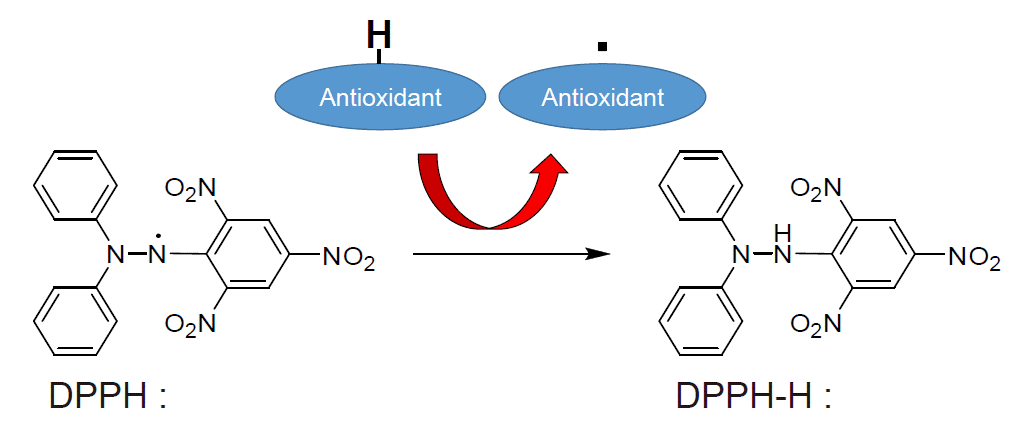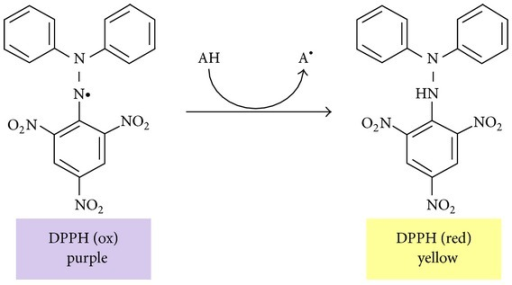DPPH - Wikipedia. DPPH is a common abbreviation for the organic chemical compound 2,2-diphenyl-1-picrylhydrazyl, a dark-colored crystalline powder composed of stable free radical molecules. It is used as a monitor of chemical reactions involving radicals and a standard of the position and intensity of electron paramagnetic resonance signals.. DPPH - an overview | ScienceDirect Topics dpph. The DPPH radical (DPPH) is a stable molecule soluble in methanol characterized by its deep-violet color with an absorption maximum at 515 nm dpph. Antioxidants (AH) or other radical species (R) are able to react with this stable radical (DPPH) by providing an electron or hydrogen atom, thus reducing it to 2,2-diphenyl-1-hydrazine (DPPH-H) or a .. The Chemistry of DPPH· Free Radical and Congeners - PMC. Since the discovery in 1922 of 2,2-diphenyl-1-(2,4,6-trinitrophenyl) hydrazyl stable free radical (DPPH ·), the chemistry of such open-shell compounds has developed continuously, allowing for both theoretical and practical advances in the free radical chemistry area.This review presents the important, general and modern aspects of the chemistry of hydrazyl free radicals and the science behind it.. Determination of Antioxidants by DPPH Radical Scavenging Activity and .. The use of F dpph. religiosa might be beneficial in inflammatory illnesses and can be used for a variety of health conditions. In this article, we studied the identification of antioxidants using (DPPH) 2,2-Diphenyl-1-picrylhydrazylradical scavenging activity in Ficus religiosa, as F dpph. religiosa is an important herbal plant, and every part of it has various medicinal properties such as antibacterial .. A new colorimetric DPPH• scavenging activity method with no need for a .. 2,2-Diphenyl-1-picrylhydrazyl (DPPH •) radical scavenging, the most commonly used antioxidant method with more than seventeen thousand articles cited, is very practical; however, as with most assays, it has the major disadvantage of dependence on a spectrophotometer.To overcome this drawback, the colorimetric determination of the antioxidant activity using a scanner and freely available .. The [DPPH /DPPH-H]-HPLC-DAD Method on Tracking the Antioxidant Activity .. The DPPH radical scavenging activity of reference compounds and extracts was determined by mixing of the samples with methanolic solution of DPPH (700 µM) in separate 2 mL, amber glass vials, and measured after incubation in the dark at room temperature (20 °C). The stock solutions of the standards at concentration of DPPH-R (1 mM), ascorbic . dpph. Analytical Methods Used in Determining Antioxidant Activity: A Review. The DPPH test is commonly applied to assess the antioxidant activity of plant extracts






